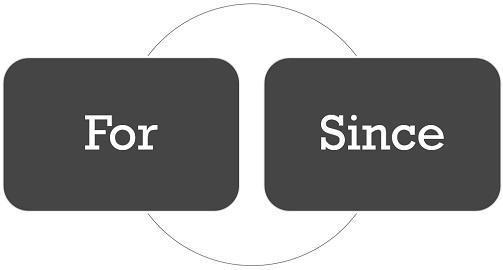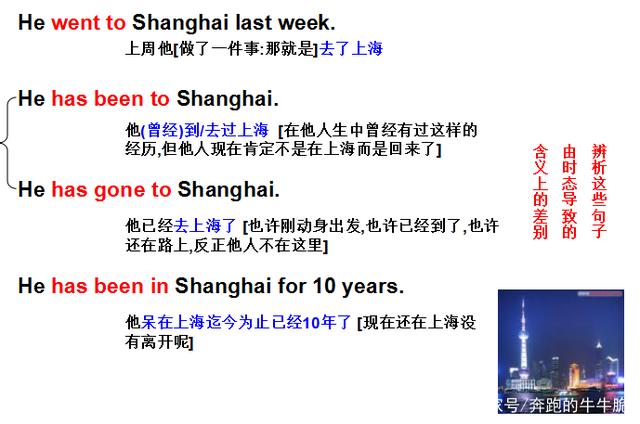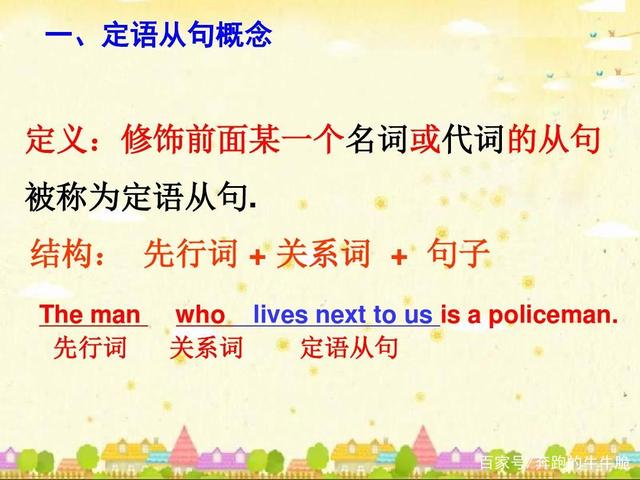Unit 10 I’ve had this bike for three years.

词汇说明
1. for/since
(1) for与标明一段时刻的词连用,标明“做某事多长时刻了”,常用于如今结束时,标明从曩昔某时初步,持续到如今的动作或状况。for地址语句中的动词是连续性动词。例如
:
I’ve known him for more than twenty years. 我知道他20多年了。

(2) since作连词,引导时刻状语从句,从句用一般曩昔时,主句常用结束时。例如:
I have studied English since I came here. 自从我来这儿就学习英语。
I have known her since I was five years old. 自从我五岁就知道她。
since还可以作介词,联接一个曩昔的时刻点或一段时刻+ago。例如:
She has been in Wuhan since four years ago.
自从四年?驮谖浜骸?/span>
2. maker
maker是名词,意为“出产者;制造者”,是由“动词make + 后缀-r”构成的。英语中,标明作业或身份的名词小结:

(1) 以-ist结束的有:
pianist钢琴家 chemist化学家 violinist小提琴家
physicist物理学家 scientist科学家

(2) 以-er,-r或-or结束的有:
teacher教师 painter画家
writer作家 singer歌唱家
visitor赏识者 actor演员
engineer工程师 inventor创造家
professor教授 reporter记者
(3) 以-man结束的有:
postman邮递员 policeman差人
businessman商人 spaceman宇航员
fisherman渔夫 dustman清洗工
(4) 以-ian结束的有:
musician音乐家 politician政治家
3. certain
certain作描述词,意为“某种;某事;或人”。例如:
He decided to sell his certain books.
他抉择卖掉他的某些书本。
【拓宽】certain作描述词,意为“断定的;无疑的”,恰当于sure,对应的副词为certainly。certain常用于以下规划中:
be certain / sure of sth. 对某事有掌控
be certain / sure to do sth. 必定做某事
be certain / sure + that从句 深信…… 例如:
They are certain / sure of success. 他们有掌控成功。
I’m certain / sure that he will come. 我深信他会成功的。

4. a 46-year-old husband and father
46-year-old是复合描述词,这种描述词有两个特征:
一是词与词之间要用连字符联接;
二是数词之后的名词用奇数方法。例如:
a three-meter-long line一条三米长的绳子
【拓宽】岁数的表达方法小结:
(1) 基数词 + years old。例如:
He is 8 years old. 他8岁了。
(2) 基础词-year-old。例如:
Lucy is an eighteen-year-old girl. Lucy是一位18岁的女孩。
(3) 名词 + of + 基础词。例如:
Tom is a boy of 18. Tom是一位18岁的男孩。
(4) at the age of + 基数词。例如:
She is at the age of 18. 她18岁了。
5. shame
shame是不可以数名词,意为“羞耻;惭愧;惭愧”。
可与不定冠词a连用,标明“羞耻的人或事;怅惘(怅惘)的事”。例如:
He felt no shame for what he had done.
他对自个所做过的事不感到惭愧。
It’s a shame that you can’t stay for dinner.
你不能留下吃晚饭,真怅惘。
【拓宽】shame常见的短语有:
feel shame at…因……而感到惭愧
in shame惭愧地
have no shame无羞耻心
with shame惭愧地
to one’s shame令或人感到惭愧的是
bring shame on使丢人
6. regard
regard作及物动词,意为“凝视;留心;认作”。常用短语regard…as…意为“将……视为……;把……当作……”,as为介词,这今后可接名词或代词。例如:
We regard him as our brother. 咱们把他当成兄弟看待。

7. opposite
(1) opposite作介词,意为“在……对面”,恰当于across from,常与名词一同构成介词短语,表方位。例如:
They live opposite the bank. 他们住在银行对面。
(2) opposite作描述词,意为“另一边的;对面的;相反的”。例如:
We live on the opposite side of the road. 咱们住在马路对面。

(3) opposite作副词,意为“在对面”。例如:
There’s an old man living opposite. 有一个老人住在对面。
(4) opposite作名词,意为“相反的人或物;敌对面”,常与介词of一同运用。例如:
“Tall” is the opposite of “short”. “高”是“矮”的反义词。
8. consider
consider作动词,意为?伎肌⑷衔保暮蟊吒省⒍驶蛐泶泳渥鞅鲇铩?/span>
Please consider my suggestion.
请思考我的主张。
I consider that he is a selfish man.
我认为他是一个自私的人。
【拓宽】
后接动名词作宾语的动词及短语可参阅以下归纳:
结束,实习,值得,忙(finish, practice, be worth, be busy);
思考,主张,不由,想(consider, suggest, can’t help, feel like);
错失,习气,(别)扔掉(miss, be used to, give up);
持续,喜爱,(要)介意(keep on, enjoy, mind)。
9. how long意为“多长时刻”,问询某一动作或状况持续了多久,故句中的谓语动词有必要是连续性动词或标明状况的连系动词。
How long have you had that bike over there? 例如:
How long can I keep the book? 这本书我可以借多久?

【拓宽】how long; how often; how soon的分析:

10. not…any more意为“不再”
Because I don’t read it any more.
not…any more意为“不再”。not常位于be动词、神态动词或助动词之后,any more常位于句末,恰当于no more。no more常位于句中,放在be动词之后,实义动词之前,两者常常可以交换。例如:
He doesn’t live here any more. = He no more lives here.
他不再住在这儿了。

【拓宽】
标明“不再”的词还有not…any longer或no longer。二者的差异在于:
(1) not…any more = no more,标明数量或程度上的“不再”添加,一般润饰中止性动词。例如:
The baby isn’t crying any more. = The baby is no more crying.
这个婴儿不再哭了。
(2) no longer = not…any longer标明时刻或间隔上的“不再”延伸,一般润饰连续性的动词。例如:
I can’t stand it any longer. 我对此再也不能忍耐下去了。
11. It is/was + adj. + to do sth. 意为“做某事是……的”,
Amy thinks it’s hard to sell her old things.(it为方法主语)
It is/was + adj. + to do sth. 意为“做某事是……的”,to do sth.为语句的真实的主语,而it为方法主语,方法主语不能用另外词来替代,句中可在描述词后加for sb.,意为“关于或人来说,做某事是……的”。例如:
It’s important for us to learn a foreign language.
对咱们来说,学习一门外语是恰当重要的。

【拓宽】
这个句型中的for sb.有时也可以用of sb. 二者意义有差异:
(1) 在It’s + adj. + for sb. to do sth. 中,for sb.意为“对或人来说”,句中的描述词是用来阐明to do sth.的,方法主语只能用it。例如:
It’s necessary for the students to do some housework.
关于学生们来说,做些家务是非常必要的。
(2) 在It’s + adj. + of sb. to do sth.中of sb. 意为“或人……”,句中描述词可与逻辑主语sb. 构成系表规划,即描述词是用来阐明或描述sb.(或人)的。例如:
It’s very kind of you to help us.
你能协助咱们真是太好了。
12. have been in 是be in的如今结束时方法,一般与段时刻状语连用。
Jim has been in for three days.
(1) been是be动词的曩昔分词方法。
(2) have been in 是be in的如今结束时方法,一般与段时刻状语连用。
【拓宽】have been to; have been in 与have gone to的分析:

(1) “have/ has been to + 地址”标明“去过某地”,如今现已回来了。例如:
I’ve been to Beijing twice. 我已去过北京两次。
(2) “have/has been in + 地址”标明“在某地待了一段时刻”。例如:
He’s been in this school for two years. 他在这所学校待了两年了。
(3)“ have/has gone to + 地址”标明“到某事去了”,如今还没有回来,可以在去的途中,也可以在那里或回来的途中。例如:
— Where’s Wei Hua? 魏华在哪里?
— She has gone to the zoo. 她到动物园去了。
13. 宾语从句
But he also thinks some things will never change, and his hometown is still theplace thatholds 
all his childhood memories.
这是一个复合句,some things至句末为宾语从句,作thinks的宾语。在该宾语从句中包括由and联接的

两个分句,在第二个分句中,“that holds all his childhood memories”是定语从句,润饰先行词place。关系代词that在定语从句中作主语。当定语从句的先行词指物时,联络代词可用that或which,当联络代词在定语从句中作宾语时,联络代词that或which也可省掉。例如:
Pass me the book(that/which) you bought for me yesterday.
把你昨日给我买的那本书递给我。
同学们,这是8大学下册的最终一个单元的常识点了,你们是不是都掌控了呢?